The best historical fiction transports you around the globe and throughout time. So we compiled a list of our favorite historical fiction books for your reading pleasure.
From riveting narratives based on historic events to captivating tales of personal experience, from the trade routes of 18th-century Japan to the wilds of early Canada and the United States, these great books offer an array of literary journeys. Pack your bags and start one today!
Historical Fiction Set in North America
1.

The Killer Angels
A classic of Civil War literature, Michael Shaara’s Pulitzer Prize winner remains as compulsively readable as when it was first published in 1974. It takes place during four of the bloodiest days in our nation’s history: the beginning of the Gettysburg campaign, during which the Confederates attempted their first full-scale invasion of a Northern free state. The story focuses on towering leaders like General Robert E. Lee, but Shaara never loses sight of the ordinary soldiers who carried their hopes and dreams onto the battlefield, some of whom would never return home.
2.
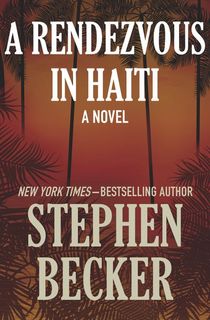
A Rendezvous in Haiti
U.S. marine Lieutenant Robert MacAllister has been sent to Haiti to put down a rebellion in 1919. This thrilling tale delves into the political state of Haiti, racial politics, and love in times of war.
3.
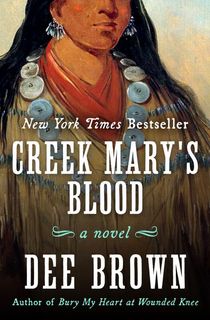
Creek Mary's Blood
The author of the beloved Bury My Heart at Wounded Knee turns his pen to fiction in this tale about a real woman who attempted to mediate between white and Native people in the 18th century. Mary Musgrove, born to a Creek woman and an English settler father, was primarily raised by her Creek grandmother. At the age of seven, she was baptized and brought to live among a white town for eight years. Her experience in both worlds made her strive to bring peace amongst her peoples and gave her keen insight into the colonial era. Brown uses his historical research to craft an engaging and often heartbreaking narrative.
4.
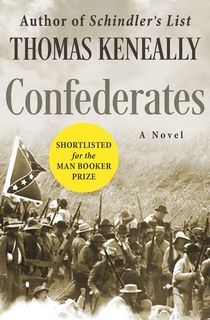
Confederates
Keneally, an Australian author, has made his name in history—both fictional and non. Best known for writing Schnidler’s List, Keneally turns his eye towards the Civil War in this riveting and even-handed look at the Confederate army at Antietam. This book shows a shocking degree of insight from an non-American author and was nominated for the Man Booker prize.
5.

Lincoln in the Bardo
Saunders took home the Man Booker prize for this novel—just the second American author to receive the UK's prestigious literary award. Set during the American Civil Lincoln in the Bardo focuses on—who else?—Abraham Lincoln and his eleven-year-old son, Willie, who is gravely ill. Despite hopes of a recovery, Willie soon passes to the other side of the veil. Yet he’s far from gone. Spirited away to a purgatory (or "bardo"), young Willie finds himself surrounded by fellow spirits each with a story to tell. Blending historical fact with otherworldly fiction, Saunders' novel is a moving exploration of history and grief, told in his signature sense of humor.
6.

As Tears Go By: Inspired by True Events
This intensely emotional story will tug at your heartstrings. When Maria, a Cree woman raised in residential schools, discovers that her children will be sent off to the same schools, she will stop at nothing to save them. The legacy of sending native Canadians to residential schools is a black mark on history, and this novel begins to reckon with that legacy.
7.

Monkey Hunting
Set in both Cuba and China, Monkey Hunting follows multiple generations of the Chen family. García does not shy away from any of the less-than-ideal facts about Cuba, Chinese immigration there, the use of slaves, and more.
8.

Rilla of Ingleside
Yes, this is an entry in L.M. Montgomery’s Anne of Green Gables series. But it’s also a quietly stunning portrait of a Canadian family during World War I. The only book from the Anne series to really take in the outside world, watching Rilla grow and mature through the years of World War I will affect any reader.
9.

The Trade
The fur trade made Canada and northern New England very prosperous areas in the 1800s. Stenson’s novel delves into the often dark facts behind the romanticized industry. It won a number of prestigious Canadian literature awards upon its release in 2010.
10.

The Feast of the Goat
Urania Cabral, now in her late 40s, returns to Santo Domingo to care for her dying father. Coming back home forces Urania to confront the memories of her youth under the rule of Trujillo. Vargas Llosa is a premier Peruvian writer, and his insight into the effects of Trujillo’s reigns do not go unappreciated.
11.

The City of Palaces
When Miguel Sarmiento and Alicia Gavilán meet while working in a Mexico City jail, their lives change paths forever. The Mexican Revolution is about to begin, and their lives will not be able to continue on in bliss. The historical characters are faithfully drawn, while the fictional characters feel just as vibrant and real.
Historical Fiction Set in Africa
12.

Half of a Yellow Sun
Adichie may be most well known for Americanah, but this 2008 novel tells the compelling story of a family living through the Nigerian Civil War and the short-lived nation of Biafra. A subject few Americans are familiar with, Adichie elucidates the Nigerian Civil War without ever resorting to simple explanations.
13.
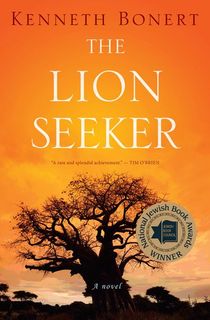
The Lion Seeker
This fascinating story tells the tale of a young Lithuanian immigrant to South Africa during the Great Depression. Bonert draws on his own experience as a young Jewish boy in South Africa to tell a vivid story that is rarely shared.
14.

Segu
In 1797, Segu (modern Mali) is untouched by influences from either the East or West—and it’s a vibrant, wealthy, and safe nation. As the slave trade, new religions, and other influences enter Segu, the four sons of the king’s advisor are pulled in different directions. The first of two novels, Segu will tug at your heart.
15.

Homegoing
Homegoing isn’t just a fantastic piece of historical fiction—it was one of the best books of 2016. Two sisters, born in Ghana, are separated from each other essentially upon birth. Their stories diverge wildly, and each section focuses on the next generation of each sister’s family. One sister’s descendants remain in Ghana, while the other is sold into slavery—her family is wholly American. This beautiful novel will floor you.
16.

The Cairo Trilogy
Nobel Prize winner Mahfouz follows three generations of the Al Jawad family, from the late 1910s to the 1940s. The seemingly cohesive family changes greatly over the course of the Egyptian evolution of 1919 and two world wars. This trilogy, starting with Palace Walk, will thrill any lover of vast intergenerational histories.
17.

Ways of Dying
Set in South Africa during the 1970s and 80s, Ways of Dying follows Toloki, a professional mourner. Told by a chorus of narrators, this novel situates the personal amidst the tumult of apartheid South Africa.
Historical Fiction Set in Asia
18.
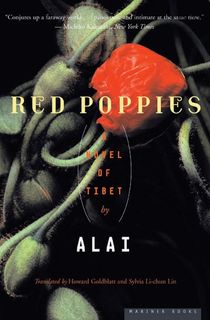
Red Poppies
This novel, written by a poet and novelist of Tibetan and Chinese descent, gives the reader a rare glimpse into the heart of Tibet. Set just before the liberation of Tibet, Red Poppies is narrated by the youngest son of a feudal chieftain. Considered an “idiot” by his family, the narrator nonetheless has clear and cutting insight into his family and the changes that are rapidly occurring around them.
19.
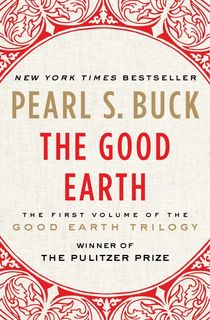
The Good Earth
This classic won the Pulitzer Prize for the Novel in 1932. Following Wang Lung, a peasant in the Chinese countryside, as he becomes wealthy, The Good Earth was one of the first popular American insights into Chinese culture.
20.
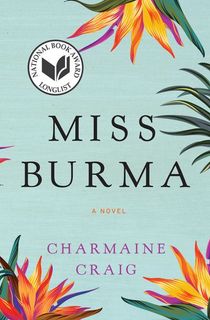
Miss Burma
Burma, more commonly known as Myanmar, has been the site of tension between ethnic group for nearly as long as it has been an independent nation. Its civil war began in 1948–and remains ongoing to this day. Craig uses her own family history to create a fictionalized window into the upheaval in Burma. This family saga is beautifully written and deeply compelling.
21.
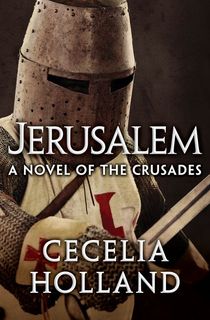
Jerusalem
In 1187, Saladin, founder of the Ayyubid dynasty, began his own crusade to take land in and around Jerusalem. As the Kingdom of Jerusalem crumbled after the defeat at the Battle of Hattin, the crusader state began to lose its grasp on the city. Holland takes the reader inside the mind of a Knight Templar, Rannulf Fitzwilliam as he attempts to re-secure Christian holdings. This fascinating exploration of the events leading up to the Third Crusade will satisfy any medieval nut.
22.

And the Mountains Echoed
Hosseini’s most popular novel was his first, The Kite Runner. But And the Mountains Echoed is a much more mature take on Hosseini’s native Afghanistan. And the Mountains Echoed centers on two siblings, Abdullah and his much younger sister Pari. Pari is sold to a couple outside of the family, giving the two vastly different experiences of their home.
23.

Pachinko
A finalist for the National Book Award in 2017, Pachinko is a sprawling family drama perfect for any historical fiction fan. When young Sunja is impregnanted by an already-married man, a young missionary offers to marry her and take her from her native Korea to Japan. An underrecognized community, Korean citizens of Japan faced immense struggles. Pachinko follows four generations of Sunja's family to envelop you in history than few Americans encounter.
24.

Pearl of China
Anchee Min has written a number of historical fiction novels, but Pearl of China has a particularly unique perspective. Written partially about Pearl S. Buck, Min imagines her childhood and young womanhood. Willow, a young neighbor, is first infuriated, then enchanted by Pearl. As the two grow, Willow becomes a part of Mao’s circle, while Pearl must flee.
25.

The Thousand Autumns of Jacob de Zoet
A Dutch trader moves to Nagasaki to take advantage of the new trading concessions opened to only the Dutch. Planning only to stay long enough to earn a large enough fortune to be able to marry his fiancée, Jacob de Zoet soon finds himself intrigued by another woman—a local midwife and the daughter of a samurai. Based loosely on the real life of Hendrik Doeff, The Thousand Autumns offers stunning insight into a 20-year period of the Japanese empire.
26.

The Fool
Raffi is one of the most popular writers in Armenian history, and The Fool is his most popular historical novel. Set amidst the Russo-Turkish war, the novel follows a couple as they fall in love despite their circumstances.
27.
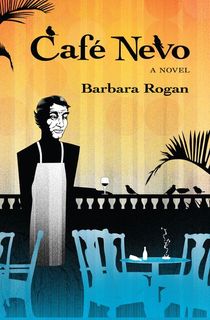
Café Nevo
Emmanuel Sternholz runs Café Nevo, a gathering spot in Tel Aviv. Artists, radicals, conservatives, and people of all ethnicities come together at this small shop. Written in 1987, Café Nevo offers a glimpse of Israeli life during a tumultuous period.
28.
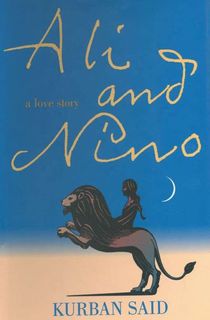
Ali and Nino
Sometimes called the Azerbaijan Love Story, Ali and Nino follows a young man and woman who fall in love despite their immense differences. Nino, a Muslim Azerbaijani, and Ali, a Christian Georgian princess, must find the compromises that make their love possible. Meanwhile, the novel gives the reader a clear view of Azerbaijan in the early 1900s.
29.

Ruler of the Sky
One of history’s most infamous leaders is brought to light through the eyes of the women who loved him, mothered him, taught him, and sired his children. Genghis Khan’s strengths and weaknesses are given equal ground in this exploration of the early days of the Mongol Empire.
30.

Buddha's Orphans
When Raja's mother commits suicide in 1962, the young boy is left on his own. Buddha’s Orphans follows the boy as he becomes a man over the next 50 years, while Nepal’s society seems to slowly break down around him. The small details beautifully observed in this novel make it a true gem.
31.
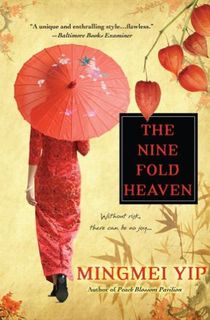
The Nine Fold Heaven
Enter pre-revolutionary China, where Camilla, a young spy, is attempting to free herself from the gang life. She's also searching for her missing child and her lover. Shanghai feels utterly real as Camilla works her way through the underbelly in her struggles to go good.
Historical Fiction Set in Australia
32.

The Sundowners
This story is based on the novelist’s own parents—specifically his father, who ran away from his family as a teen to live in Queensland. Paddy is a second-generation Irish Australian, born in Queensland. He, wife Ida, and son Sean are itinerant workers, doing their best in a harsh land. The three will overcome obstacles, including their own emotional hurdles.
33.

Brother Fish
Taking place in both Australia and Korea, Brother Fish follows the decades-long friendship of native Australian Jacko McKenzie and an orphaned African-American soldier, Jimmy Oldcorn. Brother Fish focuses on the effects of the Korean War and the White Australia policy.
34.

Outback
The first entry in Fletcher’s epic saga follows Patrick Garrity as he finds a wife, has children, and ekes out a living from the harsh Australian outback. Outback will teach you much about the early days of Australian colonialism while keeping you intrigued by the fascinating family at its center.
35.

Jewel Sea
Set in 1912, Jewel Sea follows three characters along their ride on the (real) luxury ship SS Koombana. Their lives intersect in strange and unforeseen ways as they journey around the coast of Australia.
Historical Fiction Set in Europe
36.
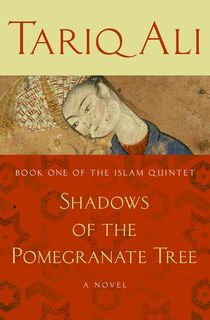
Shadows of the Pomegranate Tree
Before the conquest of Granada by Isabella I of Castile and Ferdinand II of Aragon, the southern section of the Iberian Peninsula (modern Spain) was a predominantly Muslim emirate. Ali’s novel follows a family after the fall of Granada as they attempt to find a way to live amongst Christians who will not tolerate their Islamic neighbors.
37.
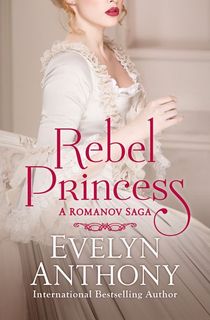
Rebel Princess
The first entry in Anthony’s Romanov trilogy, Rebel Princess focuses on a fascinating but rarely explored historical figure: Catherine the Great. Catherine was never meant to be a ruling empress, but her reign ushered in a golden age for the Russian Empire. This 1989 novel is a light but informative introduction to Catherine’s life and reign.
38.
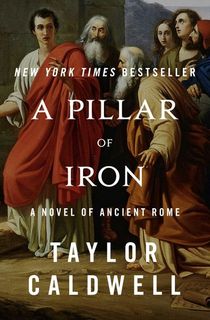
A Pillar of Iron
Caldwell, a beloved and prolific historical fiction writer, takes on the waning days of Ancient Rome in this thrilling tale about Cicero. A key member of the conspiracy against Julius Caesar and its aftermath, Cicero’s vantage point is one less frequently explored, making this tale a unique one.
39.

The Queen of the Night
Opera singer Lilliet Berne is a “falcon”: a soprano who can soar to notes that cannot be achieved by others, but whose voice is typically short-lived. As Lilliet struggles to find her place in 19th-century France, she encounters historical figures, survives revolutions, and more. This stunning epic will immerse you in European culture in the 1800s.
40.

Margaret the First
This slim, literary novel brings to a one-of-a-kind woman to life. Margaret Cavendish, born in 1623, was a duchess, a science fiction writer, a poet, and a proto-feminist. Enter her mind and explore a little-known segment of British and French history through the words of “Mad Madge”.
41.
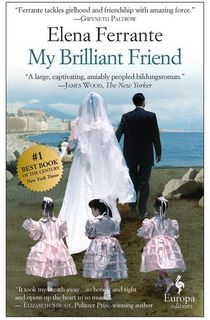
My Brilliant Friend
The first entry in a quartet, My Brilliant Friend is a stunning of portrait of a confusing, seductive friendship in the poor neighborhoods of 1950s Naples. Elena and Lila constantly find themselves obsessed with each other and the politics of their world, while also finding nearly any reason to despise the other for their understanding, or lack thereof, of their world. The Neapolitan Novels cover nearly 50 years of Italian history and culture.
42.
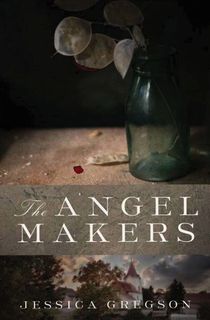
The Angel Makers
This strange story is based on an all-too-real occurrence in Hungary in the 1920s. When the men of a Hungarian village go to fight in World War I, the women suddenly realize that their lives are much better without their husbands around. Protagonist Sari uses her midwifery knowledge to kill her abusive husband quietly after his return—soon, word gets around to the other women, who come to Sari for her services. At first, only “bad” men are killed. But can Sari and the women stop their killings before it gets out of hand?
43.

The Fall of the King
Danish author Jensen’s masterpiece tells the story of (fictional) Mikkel Thøgersen and King Christian II of Denmark, between the years of 1497 and 1536. This sweeping epic has been named as the best Danish novel multiple times and is considered part of the Danish canon.
44.

The Succesor
Mehmet Shehu, Prime Minister of Albania and second-in-command to dictator Enver Hoxha, is discovered dead inside a locked room of a shotgun wound. Despite the state’s claims that Shehu committed suicide, many remain skeptical. This historical mystery will keep readers invested all the way through.
45.

Buddenbrooks
Mann won a Nobel Prize for Literature in part because of this sprawling story of a German family, based heavily on his own history. The Buddenbrooks are a wealthy merchant family that slowly falls apart over the course of four generations in the mid-1800s. Buddenbrooks remains popular in Germany to this day and was an inspiration to William Faulkner, among many others.
46.

Famine
Famine makes the horrible history of the Irish Potato Famine almost too real for its readers. The Kilmartins, a family of tenant farmers in western Ireland, struggle to survive as their mainstay crop vanishes overnight, with no help in sight from the British government.
47.
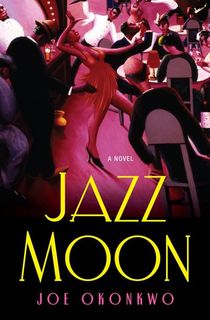
Jazz Moon
Alternating between Paris and Harlem, Jazz Moon tells the story of two young men, a poet and a trumpet player, looking for that one place where they will find life, love, and the art that they know awaits. This lyrically-written novel beautifully evokes the very feeling of the Harlem Renaissance and Paris in the 1920s.
48.
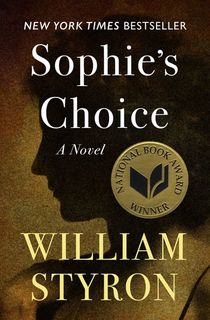
Sophie's Choice
The film version of Sophie’s Choice has saturated the culture to such an extent that the phrase has taken meaning outside of its initial meaning. But if you’ve never read the book–or seen the film–it’s time to wend your way back to the words that gave rise to the star-making role for Meryl Streep.
Historical Fiction Set in South America
49.

The House of the Spirits
Allende’s classic novel is best known as magical realism, but it’s also a compelling look at the political and historical reality of its time period. The unnamed “the President” is clearly modeled after Allende’s own cousin, Salvador Allende, who became president of Chile in 1970, while “the Poet” is Pablo Neruda. You shouldn’t read The House of the Spirits for straight facts, but it lends immeasurable insight into the lives of Chilean families at the time.
50.

The Discovery of America by the Turks
Two Arab imigrants arrive in Southern Bahia, Brazil to discover a stunningly lawless land, akin to the Wild West of American imagination. This slim book is funny, light, and informative.
51.

Distant Star
Set during the 1973 Chilean coup d’etat, Distant Star is narrated by an unnamed man who is obsessed with poet and air force pilot Alberto Ruiz-Tagle. Bolaño is one of the stars of Chilean and Central American literature, and Distant Star is one of his darkest and best novels.
52.
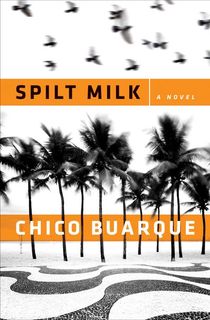
Spilt Milk
Buarque, in addition to his novels, is a prolific and beloved songwriter in Brazil. His fourth novel, Split Milk, follows a dying aristocrat in Brazil who is looking back on his life from his hospital bed. The novel is particularly interested with the history of slavery in Brazil, colonialism, and how people experience their memories.
53.

The Villagers (Huasipungo)
One of the best known Indigenist novels of Ecuador, The Villagers is a social protest novel, first published in 1934. Often compared to Steinbeck’s The Grapes of Wrath, this novel describes the plight of the indigenous people of Ecuador and other South American countries.
54.

The General in His Labyrinth
Márquez’s most political and historical novel is a fictionalized take on the final days of Simón Bolívar, the man most responsible for the success of independence movements in South America.
55.
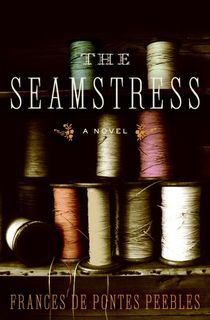
The Seamstress
Sisters Emília and Luzia are both trained as seamstresses in a small village of Brazil, always hoping to leave their home. When Luzia is abducted and Emília is married, their lives follow incredibly different paths.
Related: 15 Historical Fiction Authors We Can Never Get Enough Of
Featured photo: Timo Stern / Unsplash
This post is sponsored by Random House Publishing Group. Thank you for supporting our partners, who make it possible for The Archive to continue publishing the history stories you love.
































